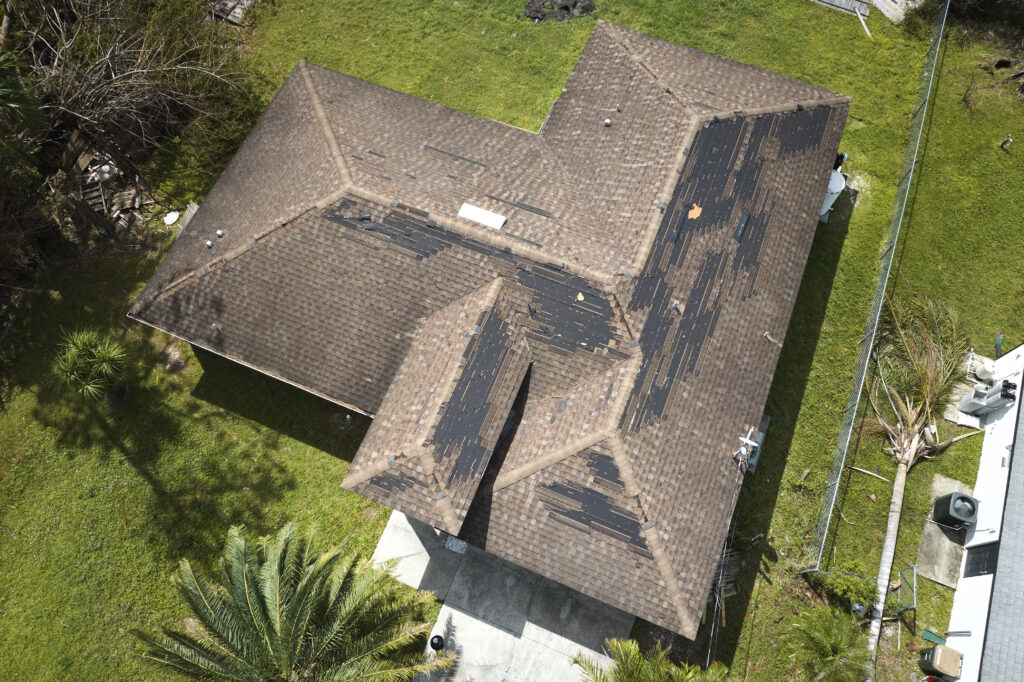When it comes to protecting your home, your roof plays one of the most important roles. Over time, however, roofs wear out due to weather, age, or damage, and eventually need to be replaced. While the idea of a roof replacement can feel overwhelming, knowing what to expect can make the entire process easier and less stressful.
Whether you’re replacing a roof for the first time or it’s been decades since the last one, this guide from RFD Services, LLC will walk you through every stage of the process. From the initial inspection to the final cleanup, here’s what you can expect during a roof replacement.
1. Initial Roof Inspection and Estimate
The first step in the roof replacement process is a professional roof inspection. A roofing contractor will visit your home to assess the condition of your roof, identify issues such as leaks, cracked shingles, or water damage, and determine whether replacement is necessary.

After the inspection, you’ll receive an estimate. This typically includes the cost of materials, labor, removal of the old roof, and cleanup. At this stage, you can also discuss the type of roofing materials you’d like, such as asphalt shingles, metal, or tile.
2. Preparing Your Home and Property
Once you’ve scheduled your roof replacement, preparation is key. Roof work is noisy, dusty, and can cause vibrations inside your home. Contractors often recommend a few preparations before the project starts:
- Move vehicles away from the driveway to allow space for dumpsters and roofing trucks.
- Cover items in your attic since dust and debris may fall during the replacement.
- Take down wall decorations, fragile items, or hanging pictures as vibrations may cause them to fall.
- Clear your yard of outdoor furniture, toys, and garden items to protect them from falling debris.
This preparation step ensures both your property and your belongings are safe during the project.
3. Delivery of Roofing Materials
A few days before the work begins, you’ll likely see roofing materials delivered to your home. Shingles, underlayment, nails, and other supplies will be dropped off, usually in your driveway or another clear area.
This delivery is a good sign that your project is about to begin. Just make sure the materials are stored safely and don’t block your garage or entryways.
4. Removal of the Old Roof
On the first day of installation, roofers will begin by tearing off the old roofing materials. This process can be noisy and a bit messy, but it’s necessary to ensure your new roof is installed correctly.
Contractors use tarps to protect your landscaping and gutters while old shingles and nails are removed. Large debris is typically tossed into a dumpster. Depending on the size of your roof, this process may take a full day or longer.
Note: Some homeowners are surprised by the noise and disruption during this stage. If you work from home, you may want to plan to be away during heavy removal periods.
5. Roof Deck Inspection and Repairs
Once the old shingles are removed, the roof deck (the wooden foundation beneath your shingles) is exposed. Roofers will inspect the deck to ensure it’s in good condition. If there are rotten, soft, or damaged areas, they’ll replace those sections before installing new materials.
This step is crucial because your new roof needs a solid foundation for long-term durability.
6. Installing the New Roof
With the old roof removed and repairs made, it’s time to install the new roof. This process usually happens in layers:
- Underlayment Installation: A water-resistant barrier is added to protect your home from leaks.
- Flashing: Metal pieces are installed around chimneys, vents, and valleys to prevent water intrusion.
- Shingles or Roofing Material: The main roofing material is installed according to manufacturer specifications.
- Ridge Vents and Caps: These help with proper ventilation and finish off the roof.
The installation can take anywhere from 1–3 days, depending on your roof size, weather, and material choice.
7. Clean-Up and Disposal
After installation, contractors will focus on cleaning up your property. They’ll remove tarps, dispose of old shingles, and sweep your yard and driveway for stray nails using magnetic tools.
A quality roofing contractor will leave your home looking neat and clean, with no sign of leftover debris.
8. Final Inspection and Warranty
Once the roof is complete, a final inspection is carried out. The contractor will check for proper installation, alignment, and sealing. Some roofing companies also schedule an inspection with the local building authority to ensure everything meets code.
You’ll also receive warranty details for both the materials and workmanship. This is important because it ensures your roof is protected for years to come.
9. What You’ll Experience as a Homeowner
During the process, here are some things you should be prepared for:
- Noise: Hammers, saws, and tools make roof replacement loud. Plan ahead if you have kids, pets, or remote work.
- Vibrations: You may notice light fixtures shaking or items rattling in your home. This is normal.
- Dust and Debris: While contractors use tarps and magnets, some dust or nails may still be found after cleanup.
- Communication: A good roofing company will keep you updated at every stage, so don’t hesitate to ask questions.
10. After Your Roof Replacement
Once your new roof is installed, you can enjoy peace of mind knowing your home is well protected. Regular maintenance, such as annual inspections and gutter cleaning, will help extend the lifespan of your roof.
Replacing a roof may feel like a big project, but with the right contractor and some preparation, the process is smoother than most homeowners expect.
Final Thoughts
Knowing what to expect during a roof replacement can take away much of the stress and uncertainty. From the initial inspection to the final cleanup, each step plays a role in ensuring your new roof is durable, attractive, and built to last.
By preparing your home, working with a trusted contractor, and understanding the process, you’ll feel more confident every step of the way. And in the end, you’ll have a brand-new roof that not only protects your home but also adds value and curb appeal.
FAQs
Q: How long does a roof replacement usually take?
Most roof replacements take 1–3 days, depending on the size, weather, and materials used.
Q: Do I need to move out during a roof replacement?
No, but it will be noisy and dusty some homeowners prefer staying elsewhere during the process.
Q: What should I do to prepare my home before roof work starts?
Clear the driveway, move outdoor furniture, and cover attic items to protect them from dust.
Q: Will my yard and landscaping be safe during roof replacement?
Yes, contractors use tarps and cleanup tools, but some minor debris may still appear.
Q: How long will my new roof last?
Depending on the material, a new roof typically lasts 20–50 years with proper maintenance.



